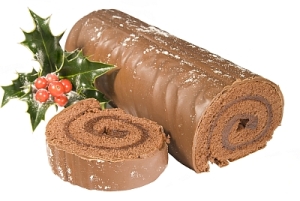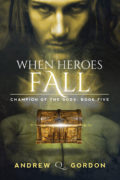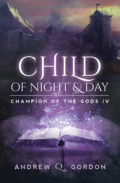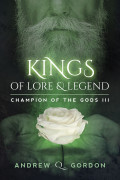Holiday Blog Event: Nephylim – A Pagan Christmas
A PAGAN CHRISTMAS
Well, actually it’s called Yule and should really be celebrated on the 21st December, the Winter Solstice. However, I didn’t think it was fair on children to ask them to celebrate their festivities four days early. Children, being the ‘live in the now’ creatures they are, could easily have all their presents on the 21st and still get upset because they don’t have Christmas Presents on the 25th. So, we moved Yule on by a few days.
We still celebrate with a ritual on 21st, but so many of the rituals and symbolism have been ‘stolen’ by Christmas it’s really all blurred into one.
I could easily write a whole book on everything, so I’m going to have to focus on just a few things. I hope you enjoy and it piques your interest to find out more.
Father Christmas / Santa Clause
I’m not big on lying to my children so neither of them ever believed in the bearded man in red who lands his sleigh on our roof on Christmas Eve, breaks into our house and leaves us presents under the tree.
Instead, my children have been taught about the Spirit of Christmas, the Mabon, the Child of Light, born in the heart of the darkness, to provide the seed of light that grows eventually into the bright Sun of Summer. I could spend a long time talking about the symbolism that underpins this imagery but suffice it to say, as far as my children are concerned, the Spirit of Christmas is what makes everyone seem happier during the holidays, why people smile more and wish each other ‘Merry Christmas’, even when they don’t know each other. The Spirit makes everything feel magical and slightly unreal and gives you that little flutter of excitement whenever you see the fairly lights or stop for a moment and think – It’s almost Christmas.
Maybe I’m wrong. Maybe there is no Spirit of Christmas, but I know for damn sure there is no Santa Claus, and, at least the Spirit brings magic and excitement and joy, not just commercialism and greed. For the whole of the period leading up to Christmas, the children look out for the Spirit everywhere and, what do you know, they find it everywhere. On Christmas Day, we think about what the Spirit brought us this year – Peace? Hope? A few less worries? A few more dreams? It’s a nice pause in the frenzy of present opening and feasting.
My daughter is 27 now and she’s gone through phases of ‘not believing in anything’. She’s never quite been able to get the Spirit out of her head and heart though.
Customs and Traditions
 Yule Log – Ever wondered about those chocolate logs with robins on them that go on sale around Christmas?
Yule Log – Ever wondered about those chocolate logs with robins on them that go on sale around Christmas?
The tradition of the Yule Log goes back a long way and takes on many forms. For me, it’s about bringing light and warmth into your life at a time when there is precious little of it outside your door.
The log is symbolic, not just of heating and lighting your home, but also bringing light and warmth to your heart and lifting your spirit at a time when there are dark days and long nights which promote depressions, along with the coughs and colds that mar the seasons.
Traditionally, the log is burned in your hearth, the ash was saved and scattered for luck, and the fire was started with a sliver of the log from the year before. Of course, my hearth is now heated electrically, so we have a bonfire. Sometimes we go to a communal ceremony nearby, which includes (weather permitting), star watching and rather a lot of alcohol (which is itself a tradition), sometimes we have a bonfire in the garden. In recent years the garden has been taken over with weeds and, being on my own with a disabled child, and being disabled myself, we haven’t been able to have our bonfire and I miss it.
The Red and White.
 So many traditional images of Christmas involve the colours red and white – the robin, the holly and ivy, Santa himself… In pagan tradition these colours have a somewhat more…earthy meaning.
So many traditional images of Christmas involve the colours red and white – the robin, the holly and ivy, Santa himself… In pagan tradition these colours have a somewhat more…earthy meaning.
If you ask my kids what does the red and white symbolise, they will tell you – blood on the snow, and that’s pretty much it.
One of the very strong images of pagan Yule tradition, is that of the slaying of summer (Symbolised by the Oak King) by winter (the Holly King). It’s the spirit of the Oak King that produces the seed mentioned above, that germinates and grows as the Sun Child in the Spring.
Of course, it’s all symbolism, but it’s very old symbolism that is still incorporated in Christmas tradition, only many people no longer know why.
Food
 Christmas is a time for food. Traditional Christmas food includes, nuts, raisins, heavy fruit puddings and cakes etc. These are all foods that were seasonally available in ancient times, when fresh food was a summer luxury and by this time of year all that was left was food that could be preserved, including salted or smoked meats, nuts, raisins etc.
Christmas is a time for food. Traditional Christmas food includes, nuts, raisins, heavy fruit puddings and cakes etc. These are all foods that were seasonally available in ancient times, when fresh food was a summer luxury and by this time of year all that was left was food that could be preserved, including salted or smoked meats, nuts, raisins etc.
 The traditional turkey/chicken/duck was the only fresh meat available saved from the Samhain slaughter because they are easier to keep alive than the bigger animals, and supplementing the preserved fruits and nuts.
The traditional turkey/chicken/duck was the only fresh meat available saved from the Samhain slaughter because they are easier to keep alive than the bigger animals, and supplementing the preserved fruits and nuts.
Conclusion
The way I celebrate Christmas may be non-traditional in the modern sense, but it is rich with much older tradition. The underlying symbolism of bringing warmth and comfort into the coldest part of the year, and reminding ourselves that summer will come again, is more than welcome and never grows old.
My children may scoff at the symbolism but they’re happy enough to take part in the rituals and I suspect there is a small (or maybe not so small) part of them which is warmed by the experience, as much as the mulled wine.
About The Author:
Born into a poor but loving mining family in the United Kingdom, Nephylim grew up in the beautiful and history rich South Wales Valleys, becoming the first in her family to attend university. As a lawyer practicing Family Law for several years, the profession allowed Nephylim to learn more about human nature at its worst and best moments, and develop empathy and a view of life not limited by social standing or background.
Tapping into the heritage of her people that throughout Earth’s ages welcomed the wandering bard into the hearts of their villages as keepers of lore, Nephylim trained as a Druid and brings the richness of her Celtic past and spiritual training to enrich and elevate her writing. Since a child Nephylim has been fascinated with other worlds, which exist within and alongside her own and has reveled in creating worlds and characters for others to enjoy.
Despite lack of family support, Nephylim continued writing privately and eventually found the Gay Authors website. With the positive response and a warm welcome received, she found the confidence to pursue her passion to a greater degree. Feeling gay fiction was a woefully neglected corner of the market where readers were all too often presented with what amounted to erotica, Nephylim strives to write quality gay fiction where sex and sexuality is not the central premise. Instead, concentration is given to character and narrative development through storytelling that goes beyond the physical.
Nephylim still resides in Wales, UK, and enjoys writing, reading, art, and taking part in medieval reenactments.
Author Links:
http://nephylim-author.blogspot.com/
http://shadowofthefallen.co.uk
https://www.facebook.com/Nephylim.author
Literotica – http://www.literotica.com/











A great Christmas discussion had been recorded, please share http://youtu.be/vIPSsYOYVnk
[youtube=http://www.youtube.com/watch?v=videoseries&w=560&h=315] More info here.